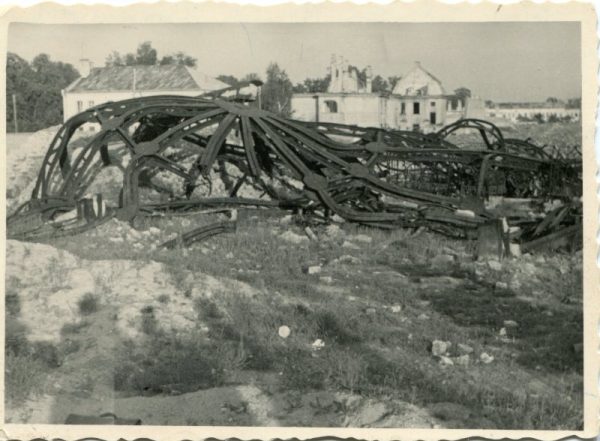Ghetto
The estimated number of Jews concentrated in the ghettos on the area of the pre-war białostockie voivodeship is about 100 thousand people. The Białystok’s ghetto was one of the biggest in the region, approximately 40 to 60 thousand of people are estimated to live there. It comprised the downtown with streets such as: Jurowiecka, Nowy Świat, Fabryczna etc. The main gate to the Jewish district was located in Kupiecka Street, near the junction with Lipowa Street.
In the ghetto there were workshops operating within the German Manufacturing Zone. Jews worked mainly in the textile factories producing the goods for the German army. They received starvation daily rations for their labour. A worker was entitled to a portion of 500 g of bread (later reduced to 350 g) for a 12-hour work shift. The elderly and ill people got even smaller portions. The daily wage was 1.2 mark while a loaf of bread cost 2.5 marks and a bar of butter 20 marks on the “black market”. In 1943 the food prices doubled. Białystok’s Judenrat deluded themselves that obedience and productivity at work for the Third Reich industry would prevent extermination. Therefore, all acts of disobedience and collaboration with the Polish underground institutions were disapproved.
In August 1943, Jewish independence fighters organised an uprising in the ghetto. Their aim was to force the wooden fence and escape to the Knyszyn Forest. Most of insurgents died, only few of them managed to hide and survive. Soon after, Germans liquidated the ghetto, and its inhabitants were transported to extermination camps in Treblinka and Auschwitz-Birkenau.
The end of the Jewish population’s road were death camps, gas chambers and crematories.


